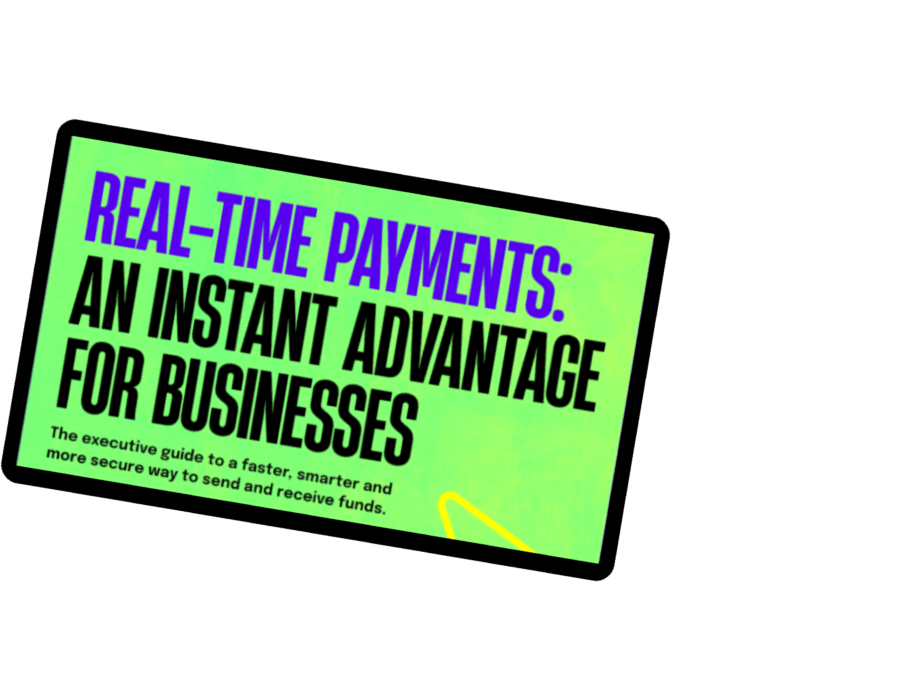Explaining the pay-by-bank advantage for merchants.
In the ever-evolving digital payment landscape, “pay by bank” is emerging as a favorite alternative payment method, offering both security and convenience. This method, rooted in the concept of open banking, is gaining traction, especially in Europe.
This article will give you a deep dive into the “pay by bank” system, its benefits for merchants, potential risks, and its future in the payments ecosystem.
What Is Pay by Bank?
Pay by bank allows customers to make online payments directly from their bank accounts, eliminating the need for cards. This method not only offers merchants the opportunity to enjoy lower fees but also significantly reduces the risk of chargebacks and fraud.
How Does Pay by Bank Work?
The process is straightforward: during checkout, customers select the pay by bank option. Then they are redirected to their bank’s trusted online platform or open their banking app and approve the payment. The funds then move directly from the customer’s account to the merchant’s account.
Merchants can provide the pay-by-bank option via their online/mobile checkout or in person with a pay-by-bank terminal.
Key Benefits for Merchants
Reduced Costs
Direct debit payments, such as “pay by bank,” typically have lower transaction fees. For instance, businesses in the UK often pay between 1.5 and 3.5% per transaction in card processing fees. In contrast, “pay by bank” usually offers more competitive rates, enhancing profitability.
Lower Chargeback Risk
Chargebacks occur when a customer disputes a charge with their bank or credit card company. Credit cards have a higher risk of chargebacks. Customers can easily initiate a chargeback on a purchase made with a credit card, which can result in merchants shipping goods or providing services without receiving payment.
With pay by bank, the threshold for a dispute is higher and merchants have more say in providing a refund. This is a huge benefit for merchants in industries with a high risk of chargebacks, like travel, tourism and online gaming.
Less Fraud Risk
With multiple layers of security, including passcodes, biometrics, bank passwords, and two-factor authentication, pay by bank makes it very challenging for unauthorized users to make payments.
Faster Payments
Transactions are processed swiftly. Real-time payments (RTP) networks, such as Faster Payments in the U.K. or PayNow in Singapore, ensure almost instantaneous transfers.
Consumer Trust
Completing transactions through their bank’s interface boosts customers’ trust and confidence, especially for cross-border transactions.
Diverse Payment Options
Offering “pay by bank” or “direct debit” can cater to a wider audience, particularly those hesitant about using cards online.
Convenience
Customers don’t need to input card details, making the process smoother.
Ideal for Big Transactions
Credit cards come with credit limits, which creates a big barrier to online businesses that sell high-value items, like B2B companies, suppliers and logistics firms, and big-ticket ecommerce. Pay by bank provides a convenient and secure online payment method for these types of transactions.
Potential Challenges
Dependency on Banks
Transactions can be impacted by any technical issues or downtime at the bank.
Limited Adoption
Some customers may not be familiar with this payment method.
Regulatory Challenges:
Different countries have varying regulations around direct debit payments and their gateways.
Global merchants know the importance of staying compliant and offering a diverse range of payment methods to customers. Rapyd’s global payment experts can simplify global compliance and offer the right payment methods for customers worldwide.
Worth the hype?
Pay by bank offers many benefits for merchants, like lower transaction fees and lower chargeback risk. They can also enhance cash flow due to real-time transactions. Customers benefit immensely from this payment option as well, enjoying a trusted transaction process that elevates their overall shopping experience. Furthermore, the direct authentication feature acts as a robust shield, minimizing the risk of fraudulent activities.
The future of pay by bank
The rise of pay by bank signifies a shift towards more direct and efficient payment methods. As consumers become more digitally savvy, the demand for seamless and secure payment options grows. Direct debit payment solutions are paving the way for a more interconnected and streamlined payments ecosystem and enhancing the overall transaction experience for both merchants and consumers.
Rapyd: Payments Solutions You Can Bank On
Navigating the global payments landscape can be complex, especially with challenges like varying customer preferences and diverse regulatory environments.
Need help mastering global payments?
Rapyd empowers merchants by enabling them to accept over 900 payment methods globally.
Let Rapyd help you localize checkout everywhere you do business.





